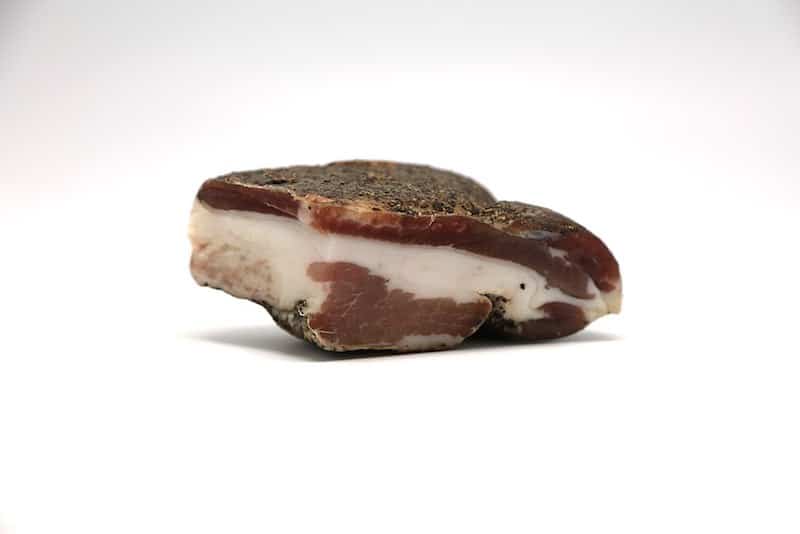What Is Guanciale?
Have you ever eyed a pasta dish on the menu at an Italian restaurant and saw that it’s made with guanciale? Or maybe you heard the word “guanciale” thrown around a lot on the Food Network?
So, what is guanciale? It’s one of the best types of cured meats out there. Read on to learn more.
What Animal is Guanciale From?
Guanciale comes from pigs. More specifically, it’s pork jowl, which is meat from the cheeks of a pig.
I should note that guanciale is different from pancetta or bacon, which come from different parts of the pig.
Pork cheek is particularly fatty, and the fat lends excellent flavor to the dishes it’s used in (usually pasta dishes).
Overall, guanciale has a particularly strong flavor, so a little goes a long way.

Where Does Guanciale Originate From?
After hearing the name pronounced out loud (“gwan-CHA-lay”), you may be able to guess where guanciale comes from—Italy.
The name comes from “guancia,” which is the Italian word for “cheek.” Makes sense, right?
Guanciale originates from central Italy and is widely used in a variety of traditional Italian dishes.
Is Guanciale Cooked?
Guanciale isn’t cooked. Instead, it’s cured in a mixture of salt and spices.
The meat is rubbed with salt and spices (such as black pepper, rosemary, thyme, and garlic), then hung in a cool, dark room for 3-4 weeks to cure.
Some people let their guanciale cure for up to 12-16 weeks. Essentially, the longer it’s cured, the greater depth of flavor it’ll have.
The curing process helps to prolong the shelf-life of the meat and eliminates the harmful bacteria and parasites in the meat that can make you sick. For this reason, you don’t have to cook guanciale.
That being said, guanciale is often cooked into dishes anyway, because of the deep, rich flavor that comes from melting the fat.
What is Guanciale Used For?
Guanciale is used in tons of traditional Italian dishes.
It’s very often used in pasta dishes, like pasta carbonara and bucatini amatriciana. It makes for an excellent base to pasta sauces.
Guanciale is also great sliced thin and eaten with bread. Additionally, you can bake it to make it crunchy and serve it as a topping in salads.
In Summary
Hopefully this gave you a good idea as to what guanciale really is. It truly is an Italian meat delicacy that’s hard to substitute with anything else. I highly recommend enjoying it with a nice glass of Chianti (one of my favorite red wines)!







